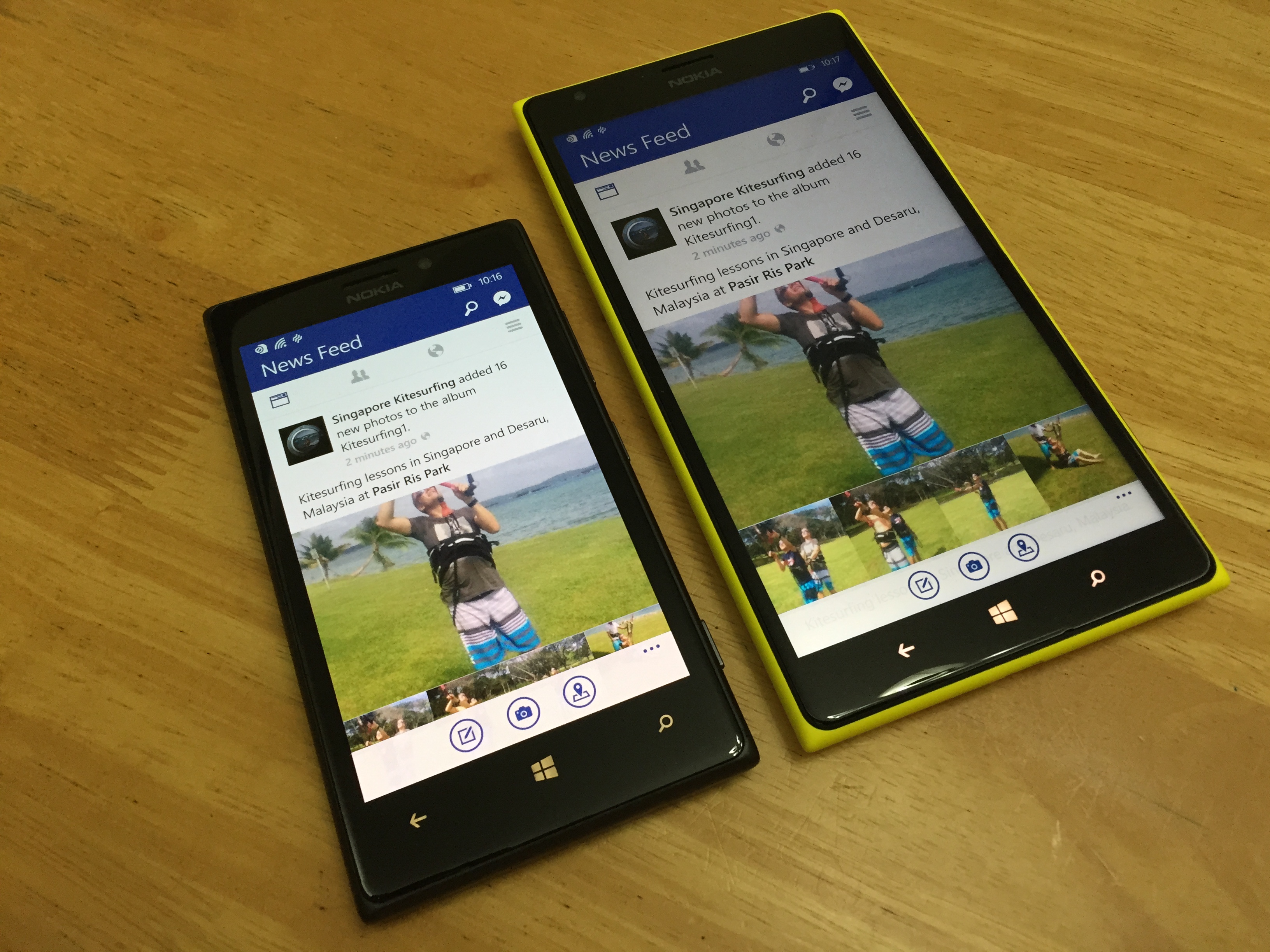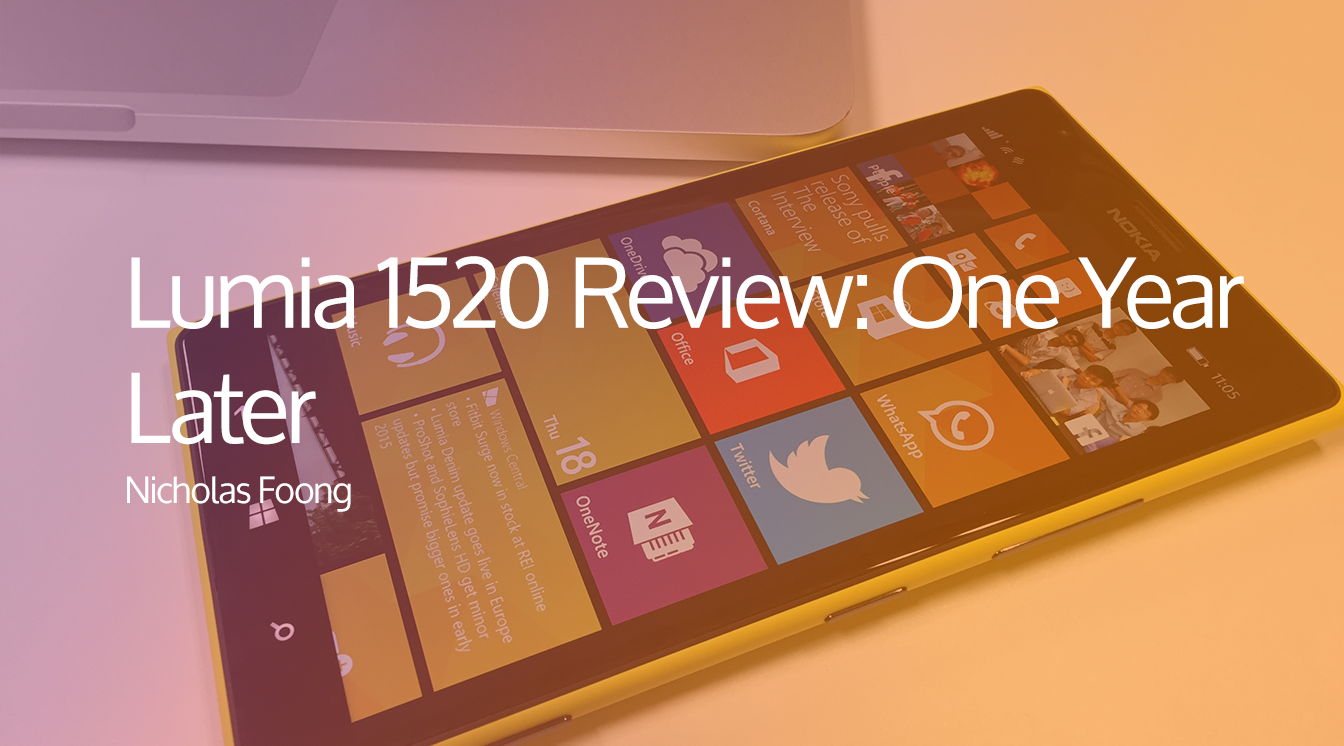Overview
One year ago, I reviewed the Lumia 1520 and was left thoroughly impressed with its all-round flagship performance. Now, a year later, the Lumia 1520 still remains Nokia’s (or Microsoft Mobile’s) best Windows Phone to date (sorry, Lumia 930). So we’ve decided to revisit the Lumia 1520 to see how well it has aged after all these months, and more importantly, whether you should still get one.
Introduction
A lot can change in a year. Microsoft and Nokia have released Windows Phone 8.1 and Lumia Cyan respectively, the former being a major overhaul of the once-primitive mobile operating system; it now boasts Cortana, an action centre, and the ability to have a start screen background. The new Lumia Cyan firmware also provided improved camera performance.
2014 was a minor leap in processing technology as far as smartphones are concerned. The Snapdragon 801 doesn’t offer much in terms of performance over the Snapdragon 800 of 2013. So while yes, the Lumia 1520 is a year old, it still is considered flagship material. Here’s a quick recap of the phablet’s specs:
| Lumia 1520 | Specifications |
| Body | 162.8 x 85.4 x 8.7mm , 209g |
| Processor | 2.2Ghz Quad core Snapdragon 800, Adreno 330 GPU |
| Memory/ Storage | 1GB RAM/ 32GB |
| Camera | 20MP, Carl Zeiss lens, optical image stabilisation, dual LED flash, 1080p@30fps1.2MP front facing, 720p@30fps |
| Battery | 3400mAh |
Note that this is a review of the device one year later, and certain categories such as “camera performance” are missing. Well the tl;dr of that is: camera still remains one of the best. Lumia Camera is a slow camera app, but the upcoming Lumia Denim update will help speed things up a little.
New Software
As of this writing, the Lumia 1520 does not have the latest Windows Phone 8.1 GDR1 build and Lumia Denim (though it will be getting these by January). So I wasn’t able to do any “Hey Cortana” commands, or have the mobile data toggle in the action centre, or, you know, create folders on the start screen.
But that’s ok, because the lack of those features isn’t a deal breaker, though they would have been nice to have. I was tempted to install preview for developers software on this review unit (which would grant me the aforementioned features save for “Hey Cortana”) but alas, it is a review unit, and I’d better not mess around with the software.
Windows Phone 8.1 is a huge improvement over Windows Phone 8, and if you found the OS experience enjoyable last year, this year it’s even better. Closing apps is much easier with the swipe-down gesture as compared to stretching your thumb to hit the “x” at the top right hand corner, and Cortana is always a joy to have. Action centre is great too, and Microsoft has taken advantage of the larger screen size by having 5 customisable toggles instead of the usual 4. One gripe that I have about the Action Centre though, is that because the phone is so huge, accessing the Action Centre by swiping down from the top of the screen is an extremely difficult manoeuvre to perform with one hand. One could only hope that Microsoft had implemented some software optimisations for the larger hardware, be it in the form of Apple’s Reachability feature or via a two finger swiping action, to make accessing the Action Centre easier.
When I was using the Lumia 1520 as my daily driver I noticed a rather major flaw in the software. Periodically, the touch screen will become unresponsive. This has happened an average of 4 times per day, and while it’s not a deal breaker it certainly was annoying. I hope Microsoft pushes an update to fix this issue soon. To be honest though, I doubt they will.
Another thing that I noticed about the 1520 that I haven’t noticed last year is how huge everything on the screen is. When navigating the stock apps, such as messages and emails, everything is fine. But when opening a webpage or loading up Facebook, you’ll immediately notice that things get blown completely out of proportion.

One post on Facebook takes up the entire screen. All six inches of it. It’s ridiculous. Unless you’re over 60 and left your reading glasses at home, nobody has a need for these extra large font sizes. And as far as I know, there’s no way for you to scale it down. Sure not all apps are like this, but all you need is one app that you frequently use to be blown up in your face like that and you’ll be pretty annoyed.
Microsoft will be releasing Windows 10 next year, one operating system bridging laptops, tablets and phones, and you can be certain that the Lumia 1520 will get the update. So the 1520 is still pretty future proof as of now. Hopefully Windows 10 will be able to take better advantage of the larger screen.
Hardware
The Lumia 1520 is huge, nay, gargantuan. You hear the folks over at the Android camp complaining about the insane proportions of the Nexus 6 thanks to its 6″ (well, 5.96″) screen, but truth is it’s still more compact than the Lumia 1520. Motorola really did a good job of making the Nexus 6 not much larger than what it has to be, while Nokia hasn’t traditionally been very good at making phones compact. Sure, the 1520’s bezels aren’t massive, but they certainly could’ve been a little smaller, and that would’ve gone a long way in helping the device’s ease of use.
The 6 inch 1080p IPS LCD display is still one of the best in its class, though not quite as sharp as the 2K displays on the latest phones in the market right now. The screen offers excellent visibility even in the brightest of sunlight, as well as good viewing angles.
It is a very hefty device, coming in at 209g. This wasn’t a very prominent issue to me 1 year ago, but after using much lighter devices such as the Lumia 925 and iPhone 6, the 1520’s weight became more apparent to me and my hands did start to ache on several occasions after prolonged periods of browsing the web. The similarly-sized Nexus 6 is considerably lighter at 184g, while the Galaxy Note 4 is even lighter at 176g. Something you should consider before purchasing this phone.
Performance
Performance on this device is perhaps the best in any Windows Phone to date, and is comparable to 2014 flagships such as the Lumia 930. There is the occasional lag and stutter, as well as the “loading…” sign, but really, this is still currently the fastest Windows Phone out there (if you exclude the HTC One M8 for Windows, but you can’t get that in Singapore anyway). If you want greater speed you’ll probably have to wait for the next-generation Windows 10 flagships, and those will only be released towards the end of 2015.
Battery Life
I was extremely concerned with the Lumia 1520’s battery life after hearing complaints that battery life has plummeted after the Lumia Cyan update. I’m glad to report that while battery life may have dipped slightly from when it was running Lumia Black, the 1520 still boasts a battery life which is worthy of the title “legendary”.
On my short holiday trip, I loaded up an entire season of How I Met Your Mother (Season 7; I was re-watching the whole thing again from Season 1), and I watched around 7 episodes on the plane with only a slight dip in battery percentage. I hardly had to charge it at all while I was on my 3-day trip, and that was after using it for navigation, taking photos, and a few rounds of Angry Birds Stella. Battery life is great.
But with all Windows Phones, do note that the overheating-cum-rapid-battery-drain issues still occasionally occur on this device; it has been occurring on every single Windows Phone since the days of Windows Phone 7. A simple reboot will do the trick. It’s one of two main reasons why I left Windows Phone, the other being the terrible quality of apps, and I sincerely hope Windows 10 will fix these issues.
Conclusion
The Nokia Lumia 1520 is, in my opinion, the best Windows Phone that you can buy from Nokia to date, especially with the great new features that come with Windows Phone 8.1 and the Lumia Cyan firmware update. Ironically though, the biggest let-down is ultimately in the software. Screen responsiveness issues, lack of app optimisation for the larger screen size, and the lackluster app selection are all causes for concern.
Microsoft is expected to reveal more about Windows 10 on 21 January, and hopefully their latest attempt at revitalising the platform can place it on par with Android and iOS. But for now, the Lumia 1520 is what it is: a wonderful piece of hardware limited by its software. If you’re satisfied with Windows Phone’s software, then go ahead, the Lumia 1520, one year later, is still your best bet.




